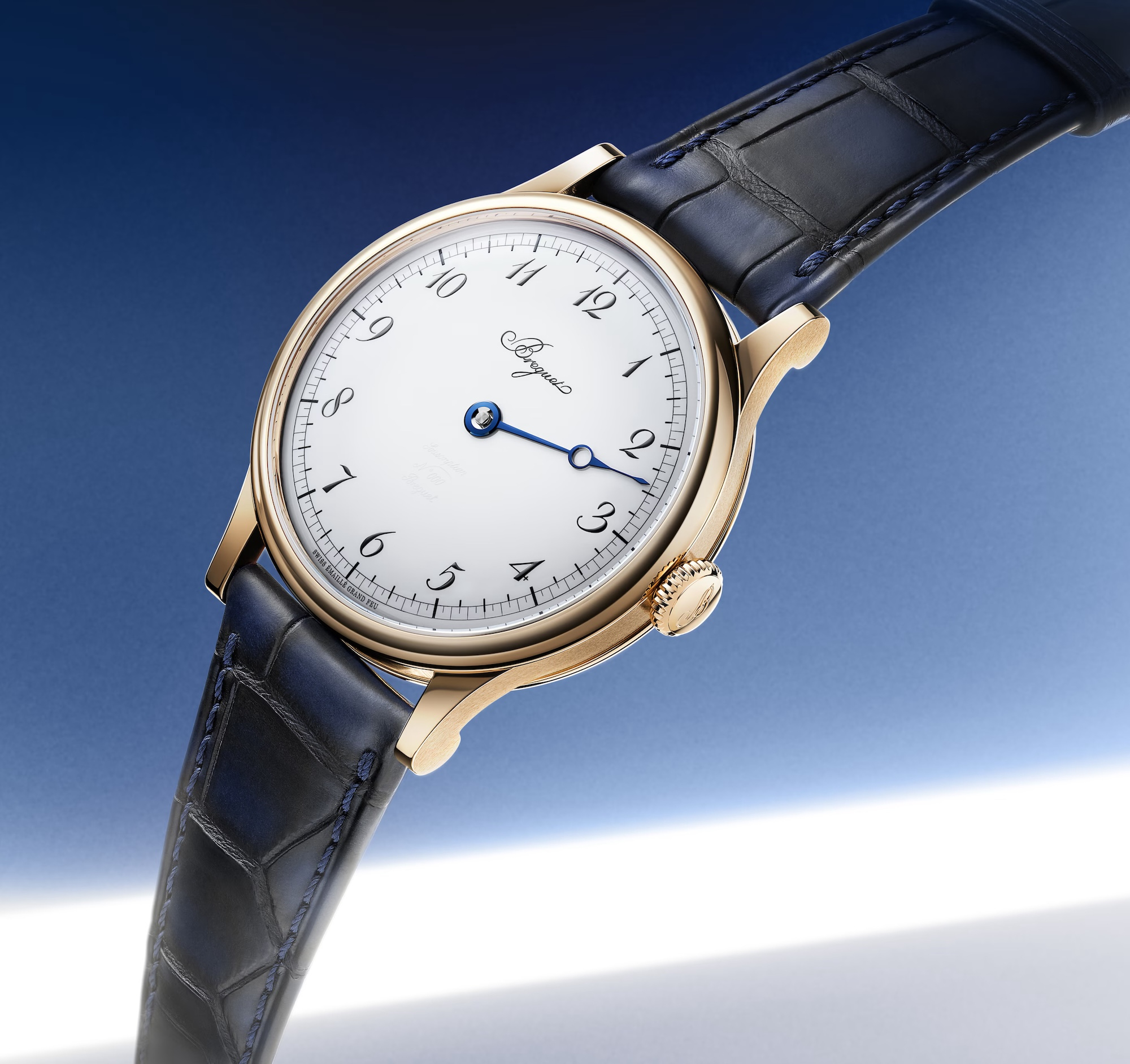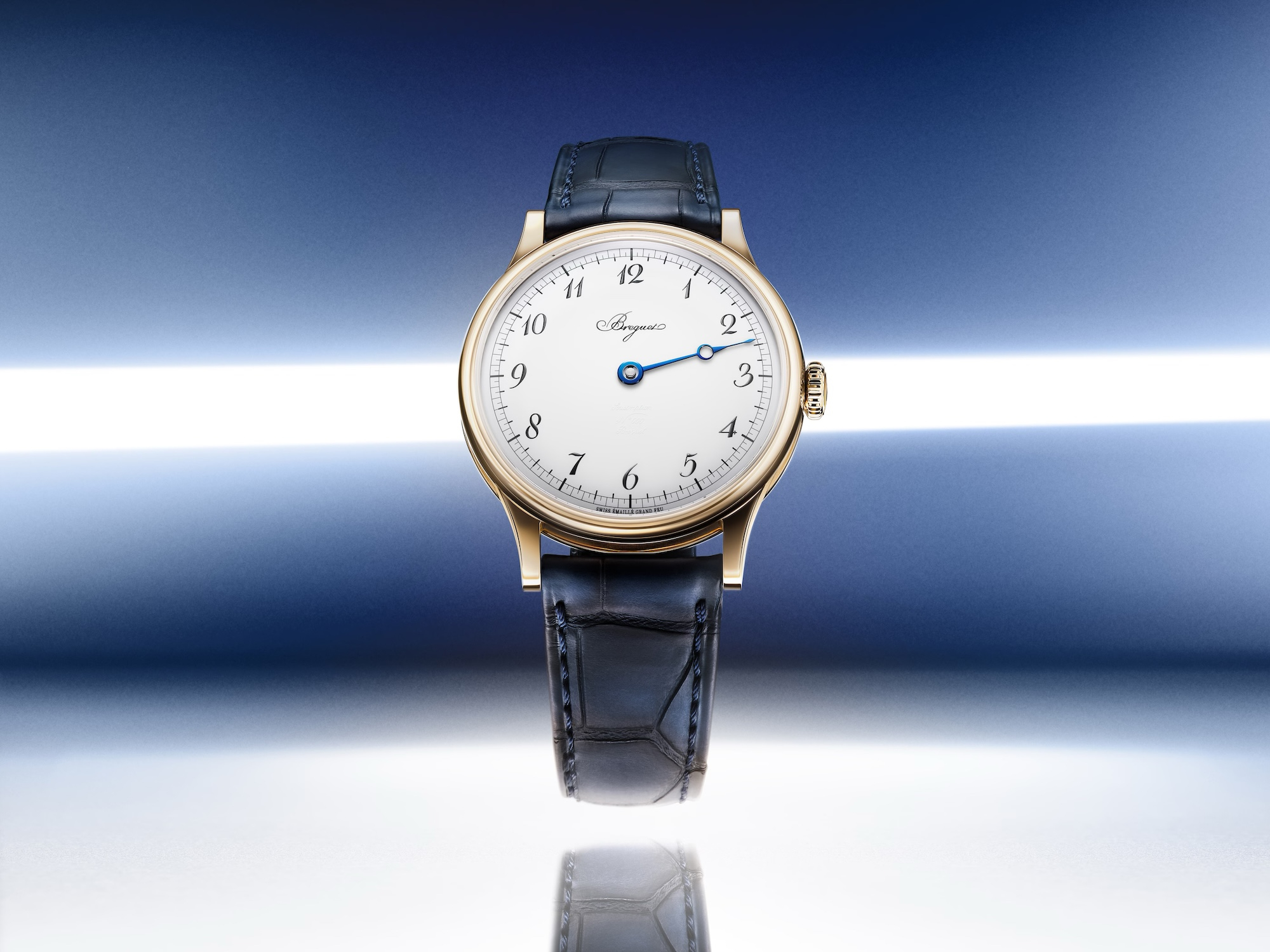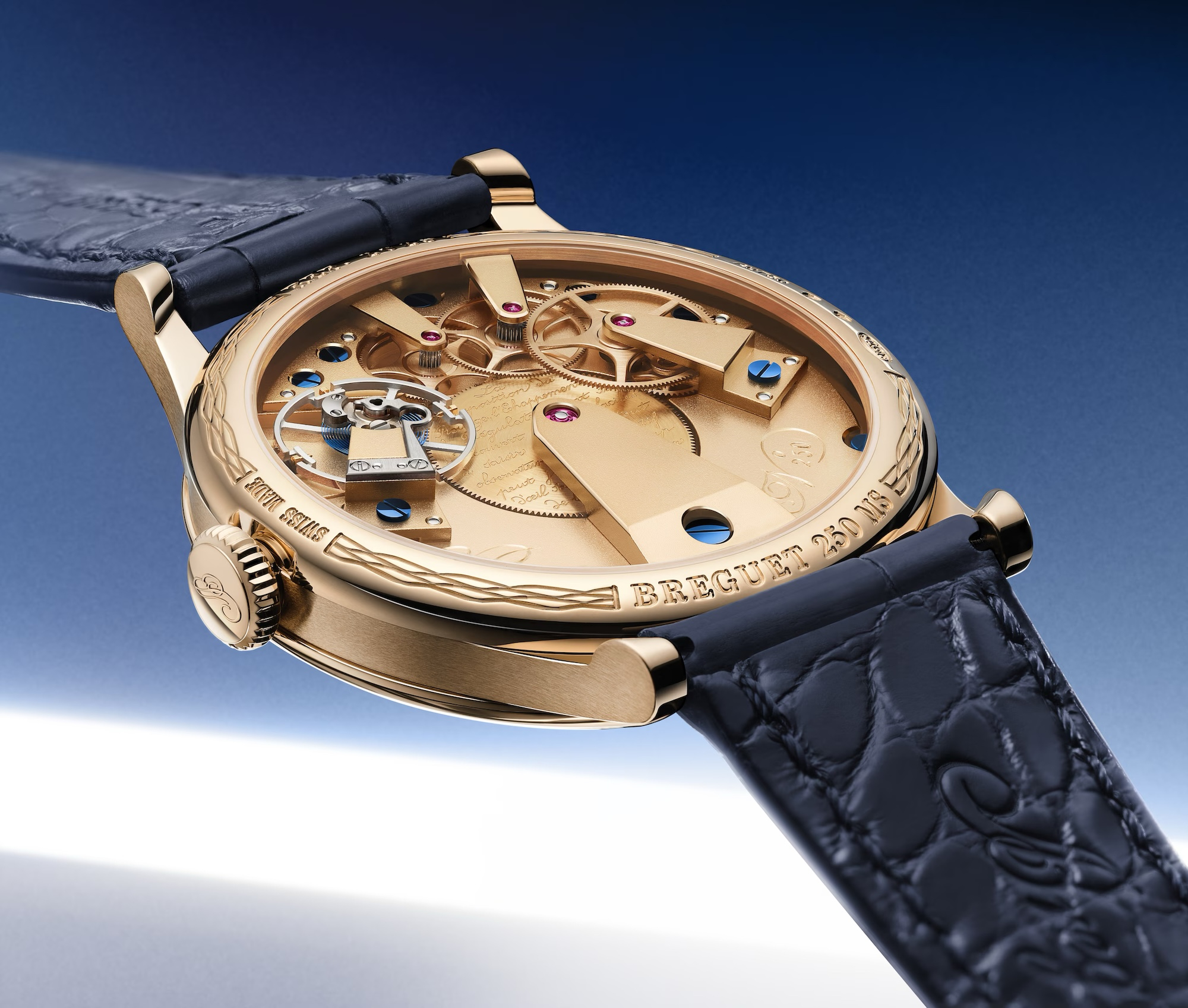Breguet dropped an interesting timepiece this month, and instead of simply “introducing” it, we look at it from a realistic consumer perspective.
The Classique Souscription 2025 comes from the Swatch Group AG’s illustrious high-end watchmaker, Montres Breguet, simply known by most as Breguet.
Breguet operates from the legendary Lemania manufacture that Swatch Group AG took ownership of in 1999, when it acquired Breguet. (Breguet acquired ownership of Nouvelle Lemania in 1992.) A thoroughly state-of-the-art historic Swiss factory, based in the gorgeous valley of the Swiss-French Jura mountains, the Vallée de Joux (also home to Audemars Piguet, Blancpain, Jaeger-LeCoultre).
Inside the factory, vintage rose engine lathes — allow skilled artisans to manually create Breguet’s signature guilloché-work dials — juxtapose some of the most sophisticated multi-process CNC machines you’ll find at the high-end of the watchmaking spectrum. And yes, I’ve been there and seen this in person.
In working with Breguet’s US communications team over the years, one of the now former team members, who liked to speak in an unfiltered manner, once asked me, “Why does everyone kowtow to Patek Philippe?”
This comment is not off the mark, and some people build their careers around being (shills), however, few of them work at watch publications that provide true editorial value to consumers.
To be clear, I respect the watchmaking from both Breguet and Patek Philippe; however, at the same time, I think Breguet in particular lacks the marketing savvy of other companies with similar brand provenance and financial backing. Experts often cite that some of the most successful Swiss watch brands are independently-owned, not group-owned, and there’s certainly credence to that. However, there are other factors at play as well.
Patek Philippe significantly beats Breguet in revenue and in units sold per year. Patek makes an estimated 50,000 – 60,000 watches a year, whereas Breguet is probably closer to 15,000 – 20,000 (and that’s production, not actual sales at wholesale or retail). Patek is estimated to make over $1 billion a year in revenue, and Breguet was doing an estimated $300 million at its peak, though that’s dropped. According to the annual Morgan Stanley report, Breguet was estimated to be a top 20 Swiss watchmaker, based on revenue, up until 2020, but Breguet has not regained a top 20 market position since.
Judging from the size of the L’Abbaye-based factory, Breguet has the manufacturing capacity to make far more timepieces than it currently produces. And that likely means Breguet’s economies of scale, or lack thereof, are a problem, which in turn is one of the factors that contribute to unsustainable retail prices. So, despite being part of one of the largest watch groups in the world, there are presumably inefficiencies in the manufacturing process that are caused not by a lack of watchmaking prowess but instead are the direct result of low demand. This usually comes back to marketing.
It’s worth noting that when I say marketing, I don’t exclusively mean advertising, I mean the full marketing process: Product, Placement, Pricing, Promotion. For reference, I was hired directly out of college as a marketing executive at a Fortune 100 retailer, and have followed the broader retail, niche watch, and other consumer-marketing industries regularly ever since. I think Breguet is a good brand. However, I think they could massively improve in all four key areas of marketing.
Most people buying watches of this ilk care more about resale prices than whether Abraham Louis’ descendant Emmanuel Breguet is the Head of Patrimony. When the retail price of a Breguet is $50K, and the resale is less than half that on the secondary market and your direct competitor, Patek Philippe, sells a similar timepiece for $50K at retail, and they trade for over retail on the secondary market. Your product becomes less marketable.
Making a restrained 40 mm x 10.8 mm case, with a non-fluted bezel, attractive vintage-style flat push-in crown, and conforming lugs, is a great start to Breguet’s 250th Anniversary. The Breguet Classique Souscription 2025 looks good.
However, don’t kill the momentum by fooling yourself into thinking you’re Patek Philippe and need to make everything in precious metal. Offer it at least optionally in stainless steel.
Nobody asked for an exclusive new 18K blonde-hued gold alloy (consisting of silver, copper, and palladium). Yet, Breguet spent R&D making it anyway, and is presumably passing the cost on to consumers.
While we’re on the subject of gold, the new 3Hz, 21 jewel, (35.2 mm x 6 mm) manually wound 144-component in-house caliber VS00 with a Blue Breguet Nivachron™ balance spring and single-barrel design offers an impressive 4-day (96-hour) power reserve. The movement is decorated with an entirely new type of guilloché pattern unveiled this year, called Quai de l’Horloge. This new design is inspired by the singular curves of the Île de la Cité and the slender refinement of the Île Saint-Louis to create a harmonious rhythm that can be infinitely modulated.
The mainplate and bridges are finely shot-blasted, a new decoration directly inspired by the movements of A.-L. Breguet. Blued steel screws and rubies further enhance the movement. At the center sits the imposing ratchet wheel, which features an engraved inscription: the founder’s words, explaining the design of the Souscription movement and taken from his advertising brochure, are faithfully reproduced in his characteristic cursive script.
The mainplate, bridges, and components look great, but the gilded brass is in the same shade as the Breguet gold case, not in actual Breguet gold.
So you’re telling me Breguet created a new gold alloy, but then used faux gold on the movement? Surely a cost-cutting measure, but you didn’t pass any of that discount to your consumers, as evidenced by an eye-watering retail price of $48,700.
The Breguet Classique Souscription 2025 (Ref. 2025BH/28/9W6) has an attractive glossy Grand Feu enamel dial, with a special inscription. With this “Souscription” timepiece, “the unique serial number and Breguet’s secret diamond point signature are engraved straight onto the enamel using a period pantograph.” Cool.
The inspiration that pays tribute to the 1796 souscription pocket watch is another seemingly good choice. Although instead of a souscription timepiece, where the consumer leaves a deposit of a quarter of the price, to enable the Quai de l’Horloge workshop to acquire the supplies needed to manufacture the watches, thus marking the start of series production — in this case, the watch is limited edition, where you pay on delivery.
One of the coolest features is the one-handed design, where you read the time from one hand. Meistersinger and Defakto are two watch brands that focus on this type of watch; however, not a lot of watches use the simplistic, easy-to-read, one-handed configuration, making this watch appealing in that aspect. Pictured below is the single open-tipped steel Breguet hour/minute hand being heat blued.
Thoughts
The real marketing question Breguet needs to ask is not “Why does everyone kowtow to Patek Philippe? — It’s “How can we better target new Breguet consumers?”
Extracting extra profit margin by way of gimmicks like proprietary gold is certainly one way to attempt to increase sales revenue, but is the goal to fleece your customers or to provide a good product in return for a fair price?
Ultimately, for those wealthy enough to afford something in this price range — a price bracket where money may not be an obstacle, yet this type of consumer is arguably the most critical with how they spend it — is there enough value being offered to justify close to $50K for this Breguet compared to an alternative from Patek Philippe, FP Journe, or Audemars Piguet?
Learn more at Breguet.
Photos by Breguet.








